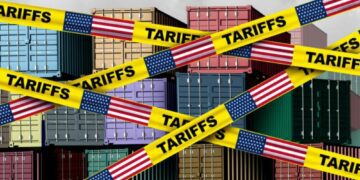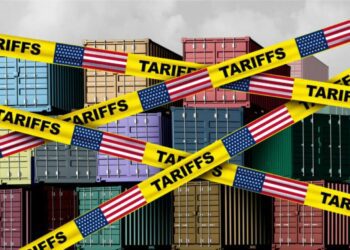When markets grow rocky, returns may falter. But your savings don’t have to crater along with stocks. Numerous lower-risk investments allow growth while minimizing volatility.
This year, shelter part of your portfolio in these safer havens:
1. High-Yield Savings Accounts
Leave behind savings accounts wasting away at 0.06%. Today’s high-yield options offer way higher rates thanks to soaring interest rates.
Top high-yield savings accounts currently deliver over 4% returns with supreme liquidity and consumer protections. FDIC insurance shields up to $250,000 against losses while allowing easy access without penalties.
Leading high-yield savings providers include:
- CIT Bank – 5.05% APY
- Quontic Bank – 4.50% APY
- Bread Savings – 5.15% APY
With higher returns than a decade ago and way above inflation, these savings vehicles provide a nearly risk-free path to steady growth.
2. Series I Savings Bonds
Issued by the US Treasury, I Bonds anchor your money against inflation fluctuation. Interest accrues monthly and compounds semiannually, delivering an inflation-adjusted return guaranteed by Uncle Sam.
As of the date of this article, I Bonds earn a 5.27% rate via a fixed + adjustable rate structure:
- 1.30% fixed rate
- 5.27% adjustable rate tied to inflation
You can purchase up to $10,000 in electronic I bonds each year. Unlike bonds with lengthy maturation, I Bonds allow redemption after just 12 months with forfeiture of last 3 months’ interest. Income remains federally tax-free until bonds get cashed.
3. Certificates of Deposit
Certificates of deposit (CDs) provide higher interest than savings accounts without much extra risk. They lock in an interest rate when opened and pay set returns upon maturity ranging from 3 months to 5 years.
Current CD rates include:
| CD Term | Average Interest Rate |
|---|---|
| 3 months | 2.15% |
| 6 months | 3.11% |
| 1 year | 3.43% |
| 2 years | 3.60% |
| 5 years | 3.85% |
Terms under 5 years qualify for FDIC insurance protecting up to $250,000 per issuing bank. While withdrawal prior to maturity slaps penalties, CDs provide guaranteed returns for money left untouched.
4. Treasury Securities
For the safest haven guarded by Uncle Sam himself, Treasury securities top alternatives. These instruments issued by the federal government come in bills, notes, and bonds.
Treasury bills mature in one year or less, sold at a discount.
Treasury notes arrive with 2 to 10 year maturation.
Treasury bonds stretch beyond 10 years upon issue.
While paying relatively low interest under 5%, Treasuries guarantee repayment of principal and interest earned – making them a staple for portfolio protection during downturns.
5. Fixed Annuities
Seeking ultra-safe growth with a touch of insurance flavor? Fixed annuities issued by insurance companies deliver guaranteed interest over multi-year terms.
These products allow owners to deposit lump sums then harvest annual returns around 4%. While early withdrawal often means surrender charges, fixed annuities provide reliable gains once held to maturation.
Payout options give flexibility to receive growing income streams, whether by predetermined schedule or across one’s lifespan. For hands-off investors with longer time horizons, annuities warrant consideration.
6. Money Market Funds
Money market funds pool resources toward short-term debt instruments – commercial paper, securities, bonds with ≤1 year maturation. This pooled investment attempts higher returns than traditional savings without much added risk.
Open-end structure allows investors to withdraw quickly without fees. And accounts stay insured against losses up to $500,000. Top money market funds currently yield over 2% – exceeding savings and CDs for short-term needs.
Aim for prime institutional money market funds versus riskier types. Leading options include:
- Fidelity Government Money Market Fund – 2.31% 7-day yield
- JP Morgan US Government Money Market Fund – 2.28% 7-day yield
7. Municipal Bonds
Seeking tax-savvy income? Municipal bonds finance public projects while paying interest exempt from federal taxes – and sometimes state/local. This tax perk makes munis shine for investors in higher brackets.
General obligation munis considered safest get backed by local tax revenue versus just project returns. And high-grade munis rarely default barring cases like Detroit’s 2013 bankruptcy.
Key benefits:
- Federal tax-free and often state tax-free interest
- Low historical default rates
- Stable market dominated by retail investors
Muni yields run around 2.5% for high grades and 4% for riskier ones. With higher income sans taxes, munis warrant a look this year.
Customizing Your Strategy
Every investor boasts a unique risk profile and financial targets. Assessing these helps determine appropriate asset allocation between stocks, bonds, cash equivalents.
Conservative investors with over 5 years until needing funds may allocate:
- 50% low-risk assets like these 7 options
- 30% stocks/equity funds
- 20% corporate/agency bonds
Beyond picking assets, implementing sound strategies further defuses volatility:
- Maintain an emergency cash buffer
- Continuously rebalance your portfolio
- Automate deposits/purchases via dollar cost averaging
- Talk to a fiduciary financial advisor
The investments above favor safety and stability for your money even during volatile times. Pair them with pro moves, and your finances stay afloat!
For more content, check out The Bright Side of Finance: 12 Optimistic Trends to Watch in 2024
This article is for informational purposes only and not investment advice. Please consult an investment professional before making significant decisions related to any investment product or security.

















































